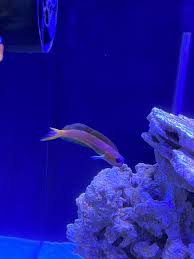The Evolution of the Dragon Symbol in Contemporary Chinese Art

The dragon has long been one of the most prominent and revered symbols in Chinese culture. As an ancient creature representing strength, power, and good fortune, it holds a profound place in Chinese mythology and art. Traditionally, the dragon symbolized imperial authority, divine protection, and a connection to the celestial realm. However, as China has transitioned into the 21st century, the portrayal of the dragon has evolved within contemporary art. Modern Chinese artists are reinterpreting this ancient symbol to reflect current societal, political, and cultural shifts. This article explores how the image of the dragon has developed through contemporary Chinese art, examining its transformation in different artistic mediums and how it reflects the changing identity of China in the globalized world.
The Traditional Dragon in Chinese Culture
To fully understand the evolution of the dragon in contemporary Chinese art, it is essential to first examine its traditional role in Chinese culture. Historically, the dragon was considered a symbol of imperial power and divine authority. In ancient times, emperors were referred to as the “Son of the Dragon” (Longzi 龙子), reinforcing the idea that the ruler’s power came directly from the heavens. The dragon was also believed to bring prosperity, harmony, and good fortune, especially through its control over natural elements such as water, rain, and the weather.
In art, the dragon was often depicted in a highly stylized form, incorporating features like the body of a serpent, the claws of an eagle, the scales of a fish, and the horns of a deer. This fantastical depiction of the dragon emphasized its power and divine status. Throughout Chinese history, dragons appeared in a wide range of artistic mediums, from sculptures and paintings to architecture and decorative arts, always symbolizing the connection between heaven and earth.
The Emergence of Contemporary Chinese Art
The late 20th century marked a dramatic shift in Chinese art as the country underwent rapid social, political, and economic changes. With the opening up of China’s economy in the 1980s and the advent of globalization, Chinese artists were exposed to new artistic movements and international trends. Contemporary Chinese art began to incorporate elements of Western modernism, as well as experimental and avant-garde styles that challenged traditional Chinese artistic norms.
One of the key characteristics of contemporary Chinese art is its exploration of cultural identity. As China redefined itself on the world stage, artists sought to grapple with the nation’s long history while embracing its future. In this context, the image of the dragon underwent a transformation, reflecting new interpretations of Chinese tradition, national identity, and global interaction.
The Dragon in Contemporary Chinese Painting
In contemporary Chinese painting, the dragon symbol has been reinterpreted in numerous ways. While traditional depictions of the dragon emphasized its divine status and connection to the imperial family, modern interpretations often challenge or subvert these associations, reflecting a more complex and nuanced view of China’s past and present.
One example of this reimagining is the work of artist Zhang Daqian, one of China’s most renowned contemporary painters. Zhang, known for his mastery of traditional Chinese ink painting, also infused his work with modern techniques. His depictions of dragons often blend classical and contemporary styles, incorporating elements of surrealism and abstraction. By doing so, he transforms the dragon into a dynamic symbol that transcends its historical roots.
Other contemporary artists, such as Xu Bing, have taken a more conceptual approach to the dragon. Xu Bing, who is known for his innovative use of Chinese calligraphy and printmaking, often creates works that blend traditional Chinese symbols with modern, global influences. His work challenges the viewer to reconsider the dragon as a symbol of Chinese identity in a globalized world. By juxtaposing traditional motifs with contemporary artistic practices, artists like Xu Bing explore the evolving role of the dragon in the collective consciousness of modern China.
The Dragon in Contemporary Sculpture and Installations
In contemporary Chinese sculpture and installations, the dragon symbol has been reinterpreted to reflect a wide range of cultural and political themes. Sculptors have taken the dragon, a symbol of imperial power, and reworked it into large-scale installations that reflect China’s transformation in the modern era.
For example, the work of artist Xu Hongfei often incorporates the dragon into contemporary sculptures, but in ways that subvert its traditional associations. Xu’s sculptures, which feature playful and exaggerated forms of dragons, evoke a sense of lightheartedness and whimsy. In contrast to the solemn, powerful dragons of the past, Xu’s sculptures highlight the idea of the dragon as a more accessible and approachable symbol.
In addition, contemporary Chinese artists such as Ai Weiwei have used the dragon as a symbol of resistance and critique. Ai Weiwei’s large-scale sculptures often comment on issues such as government censorship, human rights, and the clash between tradition and modernity. In these works, the dragon is often reimagined as a symbol of power that is both revered and contested, reflecting the complexities of Chinese society in the 21st century.
Ai Weiwei’s famous work Sunflower Seeds (2010) included millions of porcelain sunflower seeds, each individually hand-painted, reflecting the mass production and labor that defines modern Chinese society. Although not directly depicting dragons, this piece, along with others, illustrates the interplay of tradition and modernity that is at the heart of contemporary Chinese art. The dragon, as an enduring symbol, can be seen as a powerful metaphor for the relationship between China’s rich cultural heritage and its rapidly changing modern identity.
The Dragon in Contemporary Chinese Performance Art
In the realm of performance art, the dragon has also undergone significant transformation. Performance artists in China have begun to incorporate the dragon symbol into live performances and theatrical productions, using it to explore themes of national identity, tradition, and transformation.
For example, contemporary performance artists like He Yunchang have used the dragon as a symbol of Chinese nationalism and power. In his performances, He Yunchang has reinterpreted the dragon through dramatic, physical actions that evoke both traditional Chinese martial arts and modern performance techniques. His performances blur the line between ritual and contemporary art, allowing the dragon to serve as both a symbol of the past and a critique of modern Chinese society.
Other artists, such as the Beijing-based artist and choreographer Shen Wei, incorporate the dragon into their work through abstract movement and visual representations. Shen Wei’s use of the dragon as a symbol of vitality and transformation underscores its importance as a symbol of national and cultural rebirth.
The Dragon in Contemporary Chinese Pop Culture and Media
In contemporary Chinese pop culture, the dragon has continued to play a prominent role, albeit in a more commercialized and accessible form. From films to video games, the dragon remains an iconic symbol that resonates with Chinese audiences and is celebrated in popular media. The rise of Chinese cinema, particularly the global success of films such as Crouching Tiger, Hidden Dragon (2000), has brought the image of the dragon to international audiences, further cementing its place as a symbol of China’s cultural identity.
Moreover, in the world of Chinese video games and digital art, the dragon is often portrayed as a powerful creature that embodies both ancient tradition and modern fantasy. Games such as League of Legends feature dragon characters that tap into the rich lore of Chinese mythology, allowing younger generations to engage with the symbol in new and exciting ways. These portrayals of the dragon reflect a blending of the old and new, demonstrating how the symbol continues to evolve in contemporary Chinese culture.
The Role of the Dragon in Globalized Chinese Art
As China becomes an increasingly prominent player on the global stage, the dragon symbol has become a way for contemporary Chinese artists to assert their national identity in the globalized world. In international exhibitions, the dragon is often used as a symbol of China’s rising power and cultural significance. For artists in the diaspora, the dragon can also serve as a bridge between different cultural traditions, allowing them to express their personal connection to their Chinese heritage while engaging with global artistic trends.
In globalized Chinese art, the dragon has transcended its traditional associations with the imperial past, taking on new meanings that reflect China’s modern struggles, triumphs, and transformations. It is a symbol that connects the ancient past with the future, serving as both a source of inspiration and a point of reflection for contemporary Chinese artists.
Conclusion
The dragon remains a powerful and enduring symbol in contemporary Chinese art, evolving alongside the rapid changes taking place within China itself. From traditional depictions of imperial dragons to the experimental reinterpretations seen in contemporary painting, sculpture, performance, and media, the dragon has adapted to reflect China’s transformation in the modern era. As a symbol of both tradition and modernity, the dragon continues to play a central role in Chinese cultural expression, linking the past, present, and future. Through the works of contemporary artists, the dragon has not only become a representation of national identity but also a symbol of global significance, resonating with audiences worldwide.


